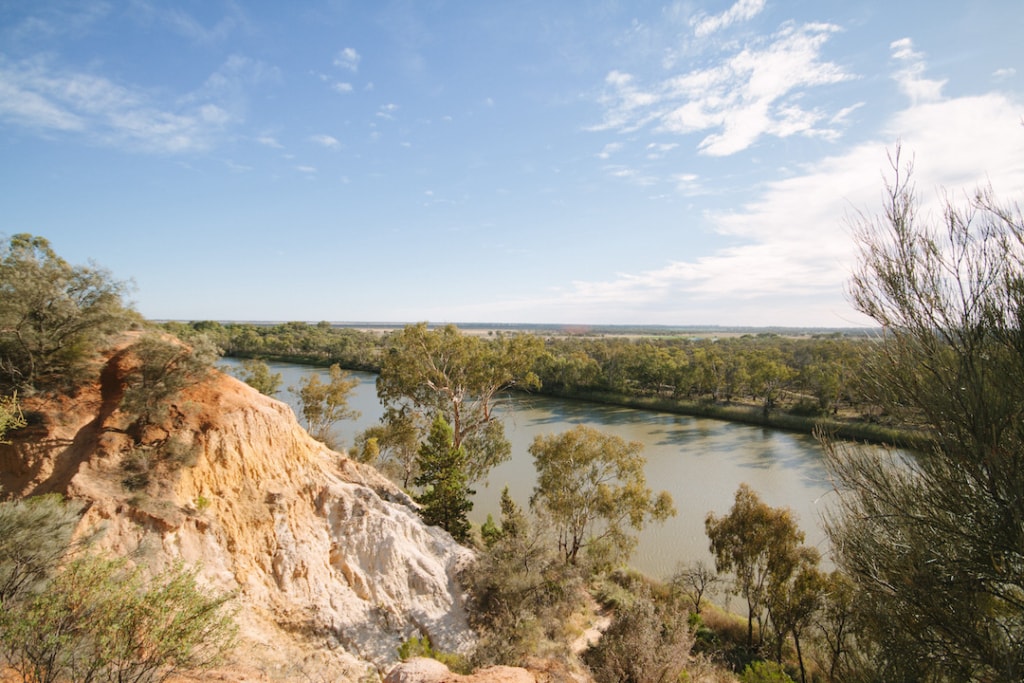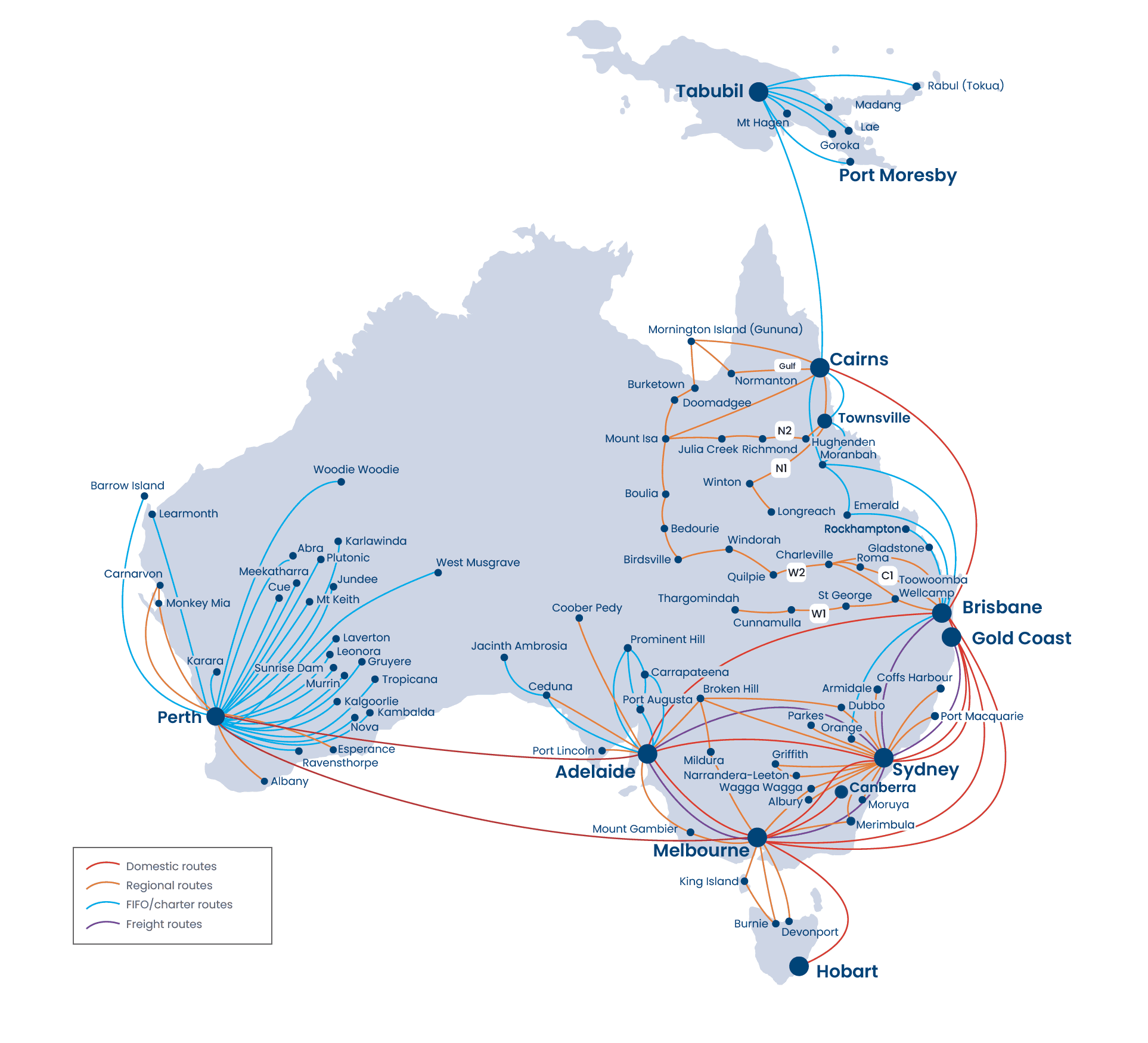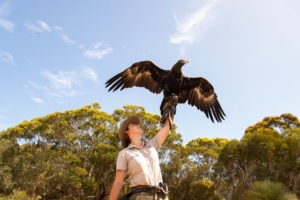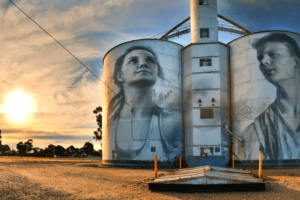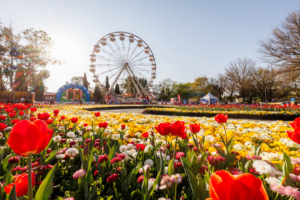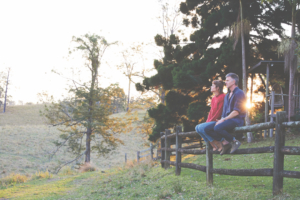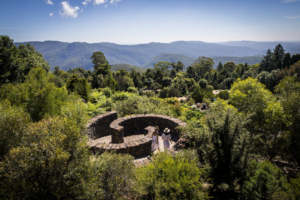Mildura, nestled on the banks of the River Murray, has long been hailed as the ideal winter escape for Melburnians seeking a sunny escape.
Explore the rich history of Mildura, one of Australia’s most interesting river towns and a popular holiday destination.
Opening image: Murray River. Image: Visit Victoria.
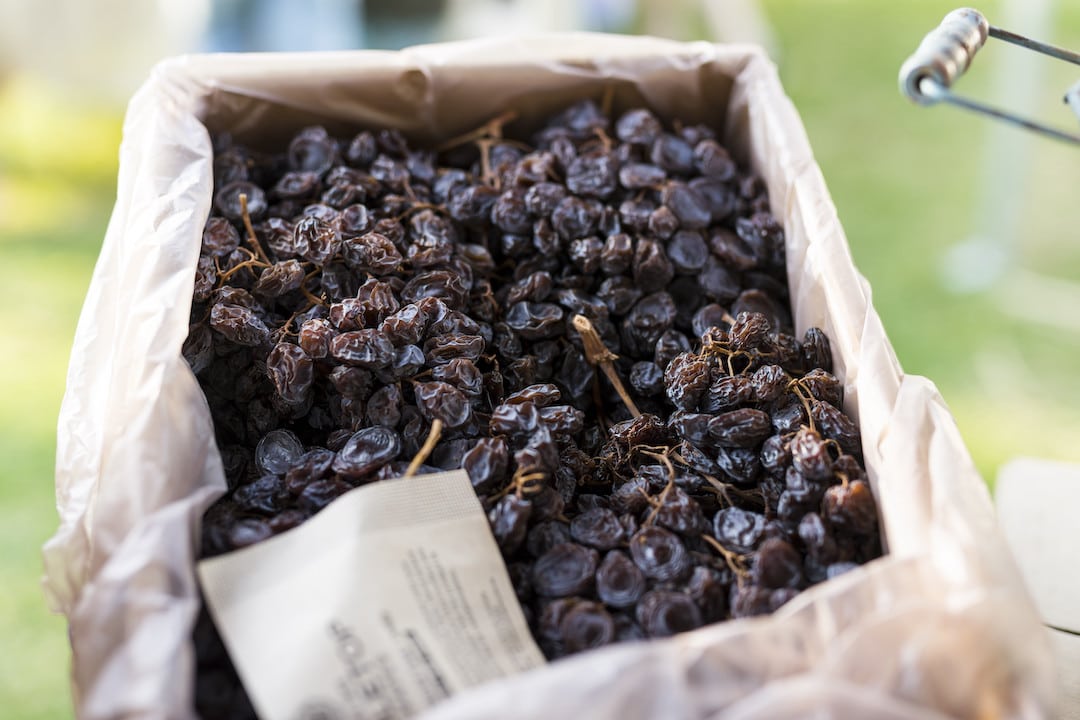
Humble beginnings
The history of Mildura revolves around a flourishing fruit industry, irrigation works and a unique blend of natural beauty and urban development.
Situated in northwest Victoria, Mildura is located around 476 km north-west of Melbourne, accessible via the Sunraysia Highway. The region surrounding Mildura falls within the Mallee region. Its historical significance dates back to 1847 when it served as a pastoral run. Originally named Lrymple, home to the Paakantyi and Latje Latje tribes – the name is derived from the Indigenous term meaning “red earth”. The area was later renamed Mildura in 1858.
In 1920 Mildura was known as a borough then, in 1922 it was called a town – by 1934 Mildura was referred to as a city.
One of the most interesting stories of Mildura’s past happened in the late 1880s when irrigation projects laid the foundation for a thriving fruit industry; both drying and preserving. This marked a big shift away from the town’s initial reliance on river boats for transportation. In 1903, a railway connection linked Mildura to Melbourne, turning the town into a hub of economic activity. By the 1930s, Mildura and its surrounding area produced over half of Australia’s dried fruit.
Between 1961 and 1991, the population of Mildura doubled, reaching nearly 24,000 people. To accommodate the influx of holidaymakers, the town developed several motels, holiday apartments, and caravan parks. One of the most notable was the Grand Hotel, an architectural gem that became a Mildura landmark.
In the mid-19th century, the Anglican Yelta Mission was established west of Mildura as one of seven Aboriginal reserves in the colony. The mission, founded by missionaries Goodwin and John Bulmer, aimed to provide support and resources to the Lower Murray people. The mission offered initial assistance such as government rations, but eventually closed in 1869.
During the 1870s, severe droughts adversely affected the sheep-carrying capacity of Mallee runs, leading to neglected lands and rabbit invasions. Social reformers recognised the need for closer-settlement farmlands and turned their attention to the potential of the fertile Mallee soils.
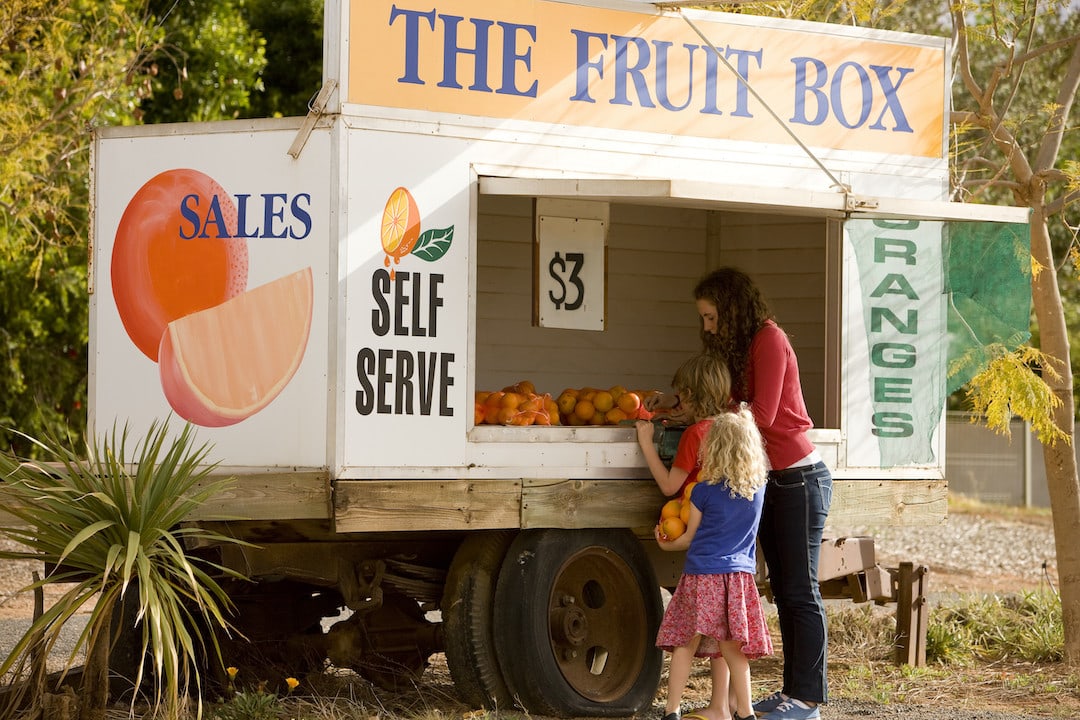
Agricultural success
The Victorian government established a royal commission on irrigation in 1884, led by Alfred Deakin (who became Prime Minister in 1903). Deakin had met the Canadian irrigationists, the Chaffey brothers, during a trip to the US and invited them to showcase their innovative irrigation methods in Mildura in 1886. This proved to be the first step in the town’s success as an agricultural success.
Following what was said to be a fascinating demonstration, the Chaffey brothers entered into an agreement with the Victorian government in 1887, which led to the establishment of an irrigation settlement. Within 20 years it was complete, with pumping plants, channels, and roads. An agricultural college was formed, farm allotments were restricted in size, and the fruit-drying and preserving industries were to flourish.
By 1890, the town had a government school, churches, several shops, two bank branches, and a coffee shop. However, Mildura remained a “dry” area, prohibiting the sale of alcohol until 1920. Langtree Hall in Walnut Street was constructed during this period and still stands as a testament to the town’s historical significance.
As the fruit industry thrived, the transportation of produce became a vital aspect of Mildura’s economy. In 1892, a large wharf was constructed, facilitating the transportation of goods by river boat.
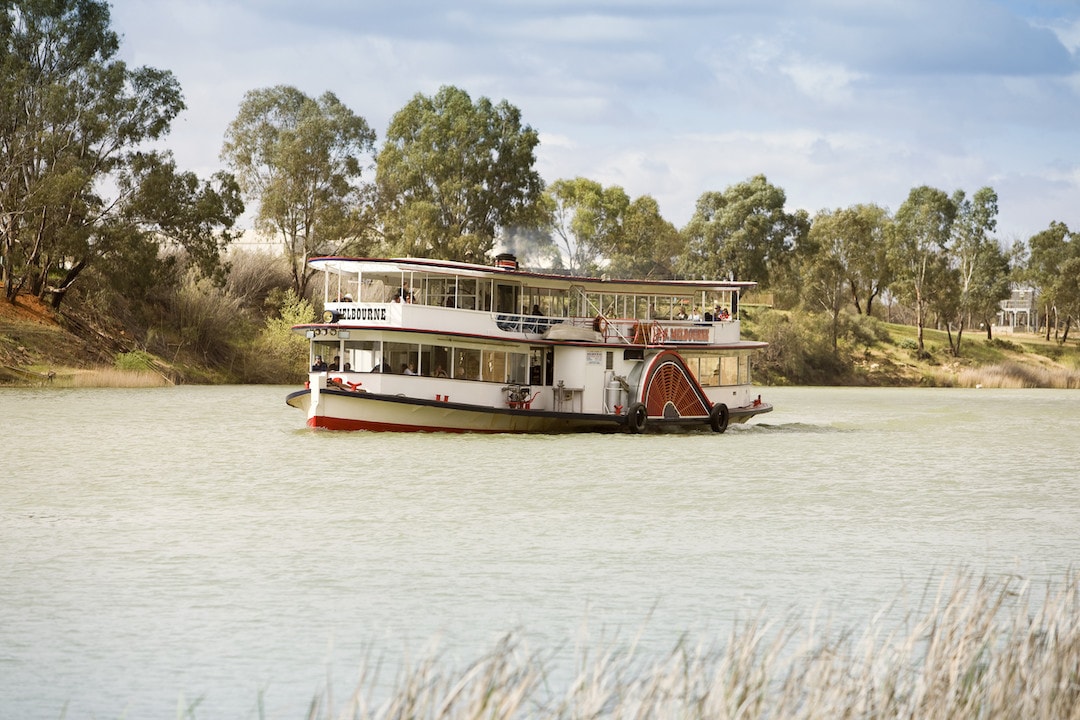
Tourism sensation
Over the next 30 years, Mildura was home to 22 motels, 19 holiday flat units, and 11 caravan parks. By 1995, Mildura city alone offered 2,759 hotel and motel bed spaces. The town also had a variety of popular tourist attractions, such as paddle steamers, a new arts centre, the Mildura homestead and the Workingman’s Club – which once had the world’s longest bar.
Langtree and Deakin Avenues emerged as bustling retail hubs, including Mildura Centro, with a diverse range of shops. The Mildura Co-op Fruit Company and packing shed still serve as essential hubs for processing and distributing the region’s abundant harvest. It’s worth noting that since 1993, the railway line has been exclusively dedicated to freight transportation.
The outskirts of Mildura are filled with picturesque citrus orchards and vineyards – yet another example of the town’s agricultural success. A significant event that draws attention to Mildura each year is the annual country music festival held in September; a lively celebration of music which attracts artists and audiences from across the nation.
Mildura’s history is a testament to the town’s resilience. From its humble beginnings as a pastoral run to its transformation into a thriving fruit-producing region, Mildura has constantly evolved to meet the needs of its residents and visitors. Today, it continues to delight visitors with its picturesque landscapes, rich cultural heritage, and warm hospitality.
Feeling inspired by the history of Mildura? Read on for the best places to eat and drink in Mildura.
Travel to Mildura
To experience the landscape and culture for yourself, hop onto a Rex flight heading straight for Mildura!

